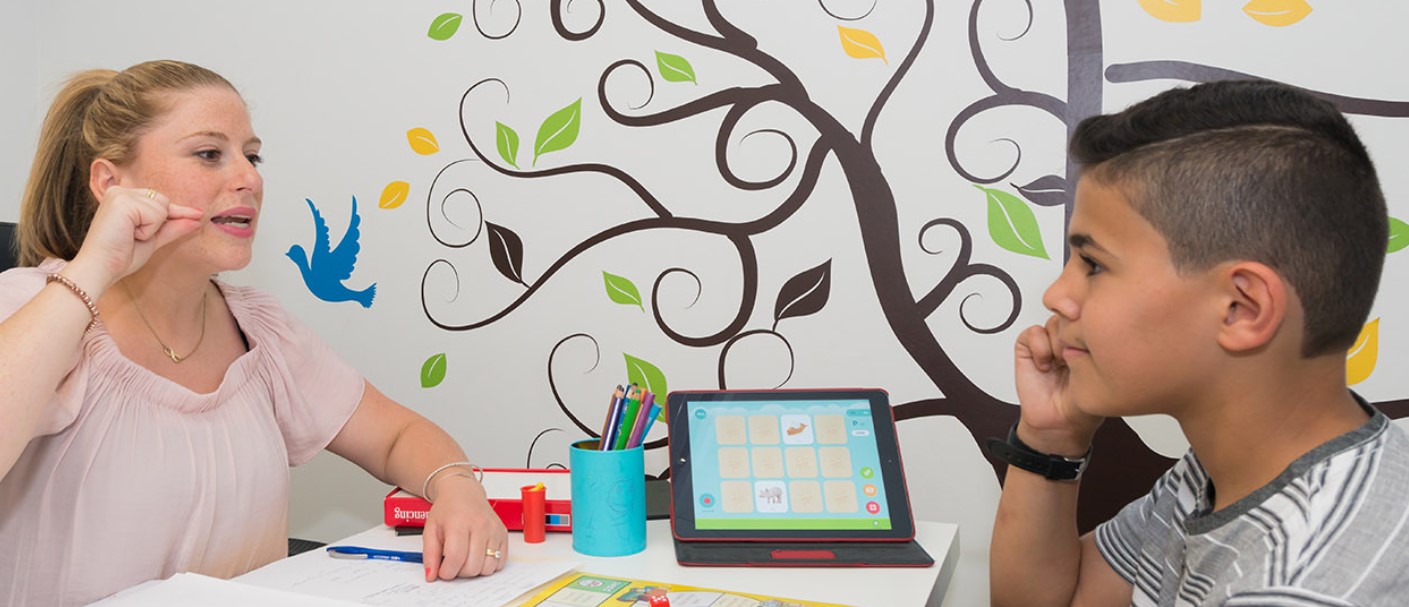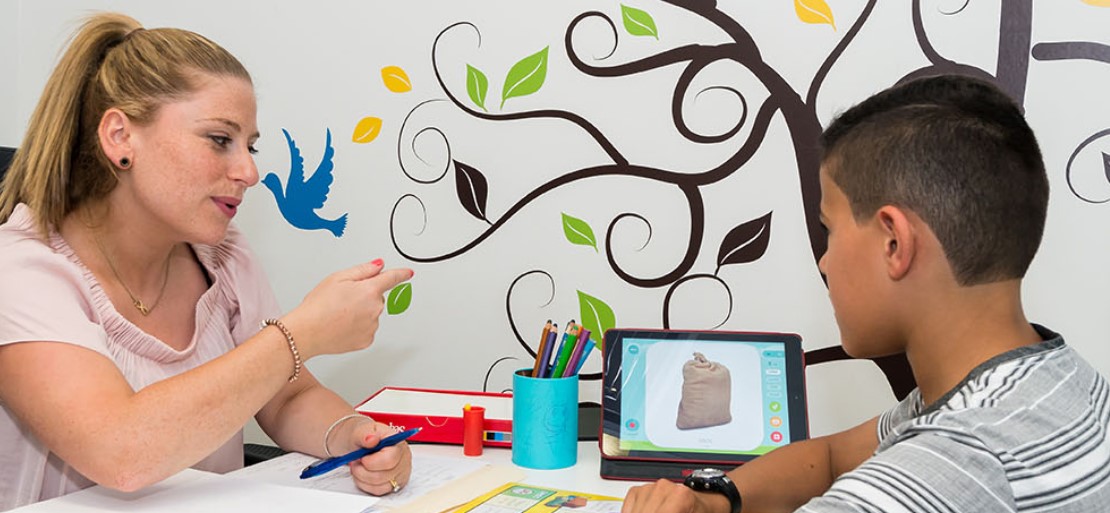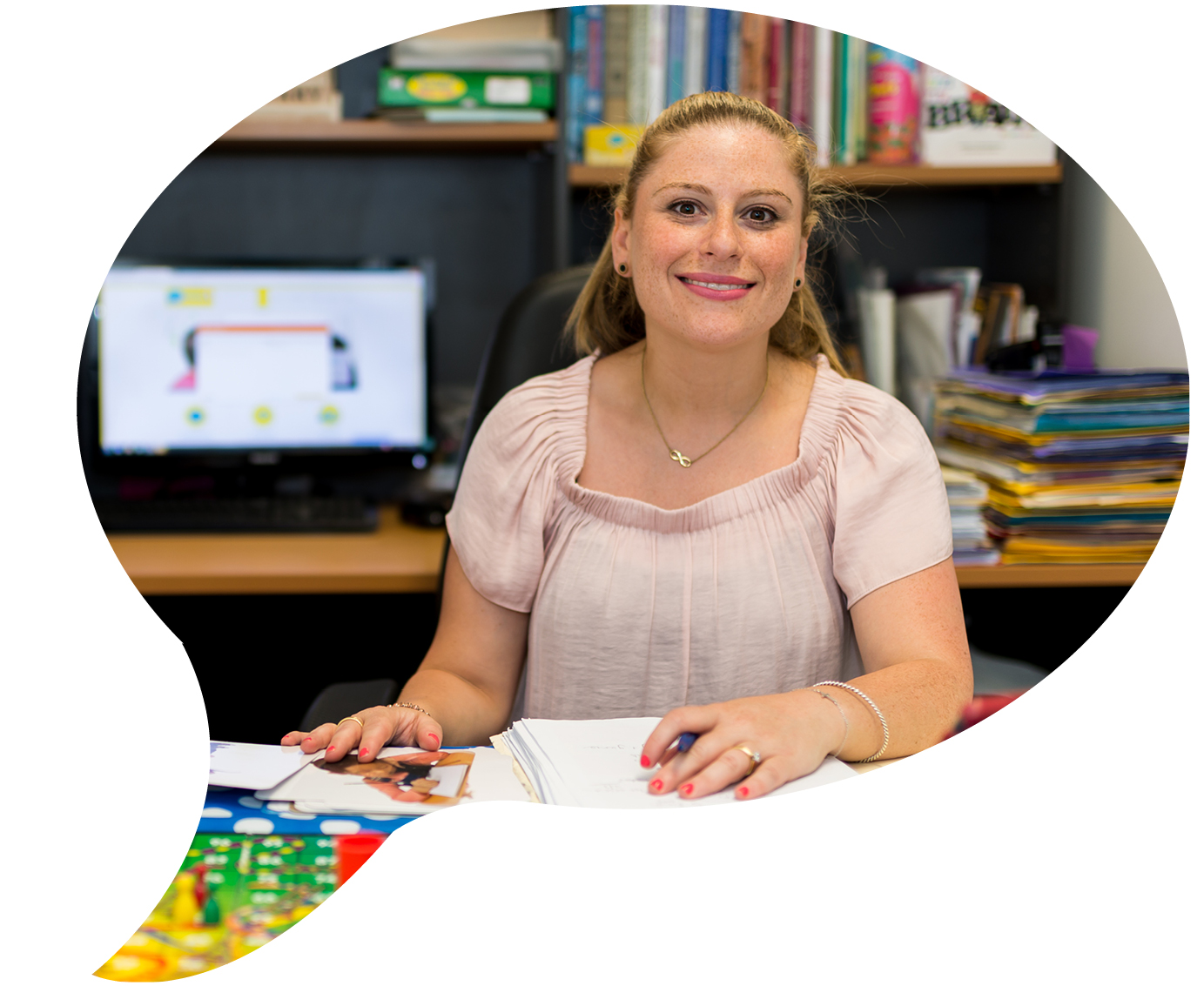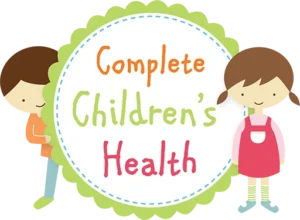Pronunciation and talking is the ability to physically move the tongue, lips, palate etc to produce sequences of speech sounds that make up words and sentences which are clear and can be understood by others.
- By 6 months, the baby makes cooing sounds (e.g. ‘oo’, ‘ee’, ‘ah’, etc.), turns towards sounds and gives eye contact when they hear an adult speaking or making sound.
- By 2 years, the child says these sounds in words – ‘p’,’b’,’m’,’n’,’t’,’d’ Examples at this stage include car = “tar” and biscuit = “biddit”. The ends of words are often missed out, e.g. tap = “ta”.
- By 2.5 – 3.5 years, the child starts to use more sounds – ‘k’,’g’,’f’,’s’,’y’,’h’. Examples of this stage include shoe = “doo” or “soo”; star = “dar”. Speech is often unclear to adults who don’t know the child well.
- By 3.5 – 4.5 years, the child will start to say – ‘sh’, ‘ch’, ‘j’, ‘z’, ‘l’, ‘v’. At this age the child is also beginning to use two consonant sounds together, e.g. “cl” (“clown”); “st” (“star”).
- By 5 years, speech should be mostly clear and easy to understand, but some immaturities may still be noted (e.g. with “r” and “th” sounds)

Why is it important?
It is important to be able to produce sounds, words and sentences which are clear and can be easily understood and interpreted by others in order to be able to express basic needs and wants, right through to being able to engage in complex conversation.
Depending on the extent of the difficulties unclear speech can impact significantly on how well a child can interact with adults and their peers and can affect the development of language and social skills. A child who is having difficulties being understood can become frustrated and angry which may lead to behavioural issues. Pronunciation and talking is also important in the reading and spelling out of words.
You can tell there are problems with Pronunciation and Talking Skills (Articulation) if the child:
- Is becoming overly frustrated when communicating with others.
- Produces speech is difficult to understand even for the familiar listener.
- Is having difficulty linking together more than one or two sounds.
- Tends to use only vowel sounds.
- Produces speech that is unclear alongside dribbling and messy eating skills.
- Produces speech that is less clear than children the same age.
- Is lisping if over 3.5-4 years.
- Is school age and is still having difficulty with several sounds.

Activities that can improve pronunciation and talking skills (articulation) include:
Naming items together when looking at a book, in the car, looking outside, while they are playing, during shopping, etc.
Copying facial expressions in the mirror (e.g. smiling, kissing, licking lips, etc.).
Playing something together that your child really enjoys and throughout the game model words they are having difficulty with.
Listening to different sounds (e.g. “s” is the snake sound, “sh” the baby is sleeping, etc.).
Listening to sounds in words (e.g. “shoe” starts with the “sh” sound, etc.).
What can be done to improve pronunciation and talking skills (articulation)?
- If a young child, engages in play where you model and use lots of different sounds while playing (e.g. saying “ch ch ch” as the train passes by, “pitter patter” goes the rain, “Baa” goes the sheep, etc.).
- Talk to your child often throughout the day.
- Turn off back ground noise in the home (e.g. T.V, radio, music) etc.
- Look at your child when they speak and encourage them to look at you.
- Read to your child.
- Listen and respond to your child’s message (not the exact pronunciation of the words).
- If your child’s speech is not clear, don’t ask your child to repeat words after you. Instead repeat your child’s sentences yourself e.g. Child: “Dat my deen tar.” Parent: “Yes, that’s your green car.”
- By repeating what your child says you are producing a good language model – and you are also showing that you have listened to what s/he has said.
- If you don’t understand your child, ask for ONE repetition and try to have a guess. Or you could try asking your child to show you what s/he is talking about. Don’t be afraid of saying you can’t understand what your child has said.
- If a child says a word incorrectly, model the correct production back to them but there is no need to make them say it again (e.g. child says “Look at the tat”, Adult: ” yes it’s a cat” and then continue with the conversation).

For more information on Tanya Boyd – click here
